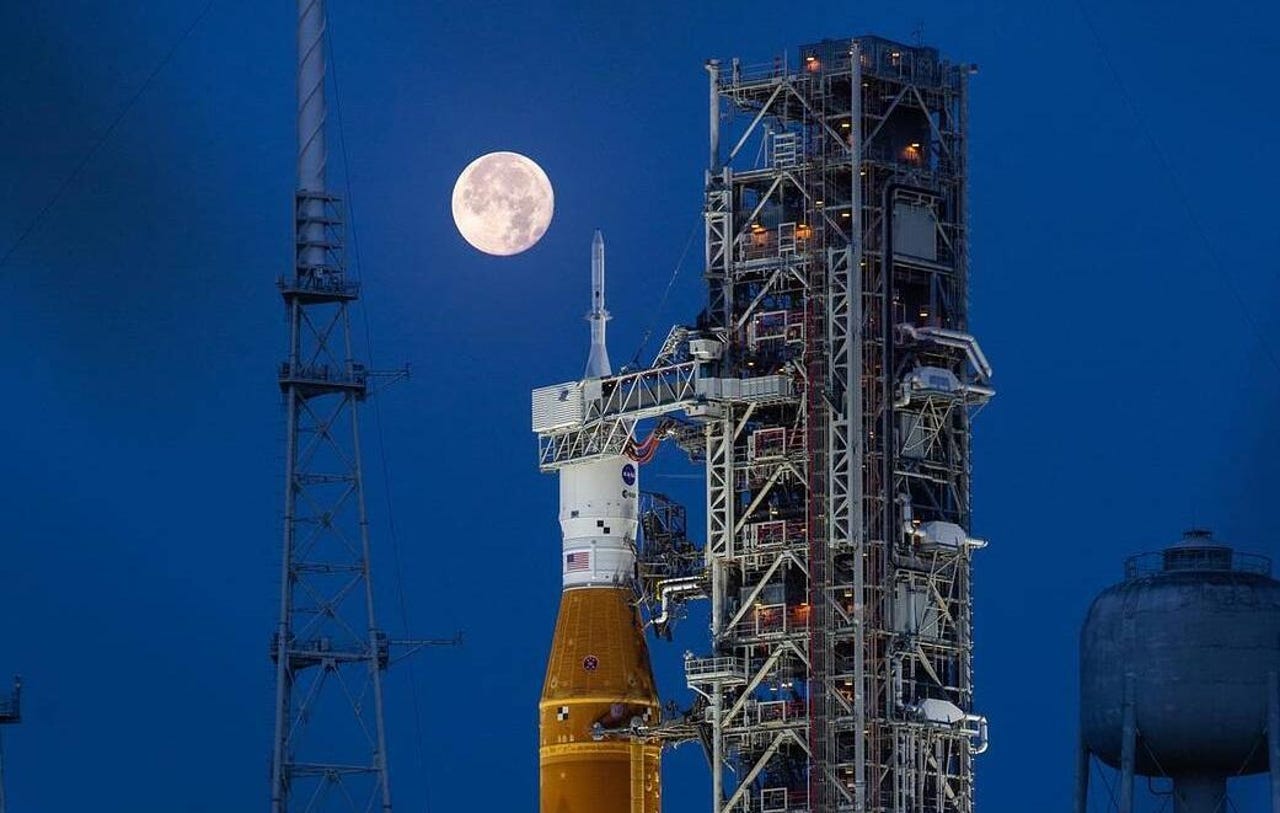































 Image: NASA/Cory Huston
Image: NASA/Cory Huston NASA has requested the 23rd and 27th of September for its next attempt to launch the Space Launch System (SLS) rocket for the Artemis mission.
Artemis I is the first step in NASA's effort to restart human lunar exploration. This first SLS launch will send an unmanned Orion capsule around the moon to test systems before sending a crew to the moon in 2025 or 2026.
Since standing down the SLS launch on September 3, engineers have been working to replace two leaky seals in lines connecting fuel tanks to the SLS's core stage.
SEE:What is Artemis? Everything you need to know about NASA's new moon mission
NASA officials picked the first date to avoid a conflict with NASA's DART spacecraft, which is set to hit an astroid on 26 September to test whether it can deflect its trajectory. After September 27, NASA will focus on Crew-5 launch on a SpaceX Crew Dragon to the International Space Station.
It picked the dates to ensure these missions can use NASA's Deep Space Network communications network.
NASA has submitted a request for a waiver from US Space Force, which oversees the Eastern Range, to approve the new dates. After the two scrubbed launches, NASA needs an extension to run battery tests.
Engineers are removing and replacing one seal surrounding the eight-inch line used to fill and drain liquid hydrogen from the core stage and another seal surrounding the four-inch bleed line used to redirect some of the propellant during tanking operations, according to NASA.
NASA expects the seals to be replaced by Friday and then will conduct a cryogenic test on the replaced seals.
The core stage fuel tanks stores cryogenically cooled liquid hydrogen and liquid oxygen. NASA stood down the first attempt on August 30 after failing to cool all four RS-25 engines to minus 420 degrees Fahrenheit (-250C), which is necessary to ensure the core stage isn't damaged on the eight-minute trip to low-Earth orbit, after which the upper stage of SLS and Orion separate and continue towards the moon.
SEE:NASA's new tiny, high-powered laser could find water on the Moon
During the second attempt, an "inadvertent command" sent during an early phase of loading hydrogen temporarily raised the pressure in the system and potentially damaged the seals.
NASA's two-hour launch window on September 23 opens at 6:47 am EDT with a landing on October 18. It has a 70-minute launch window on September 27 that opens at 11:37 am EDT with a landing on November 5.
SLS is NASA's most powerful rocket to date. Artemis has cost NASA$40 billion so far and is projected to cost$93 billion through to 2025.
 Tags chauds:
Innovation et Innovation
l’espace
Tags chauds:
Innovation et Innovation
l’espace